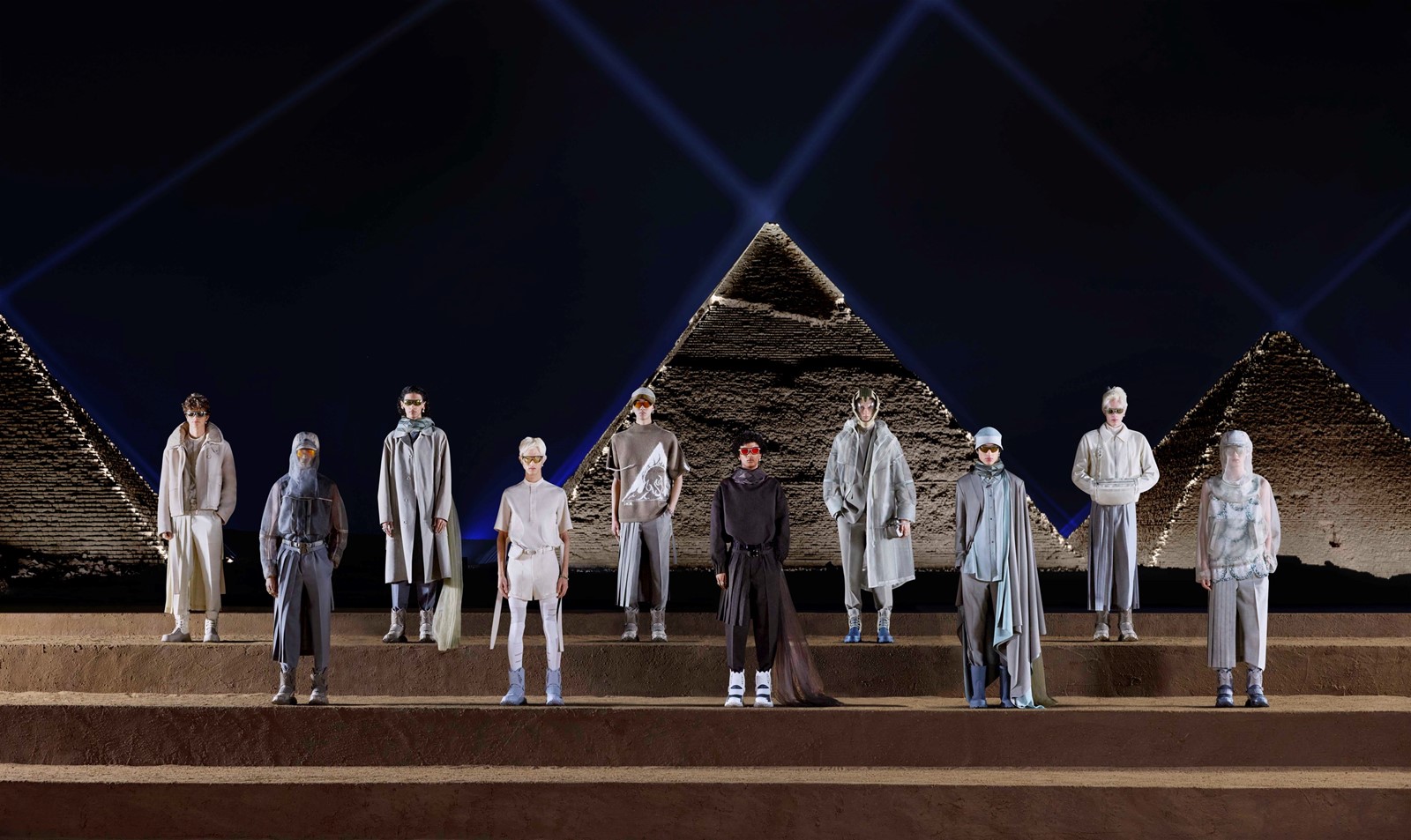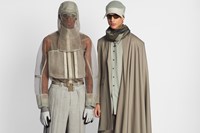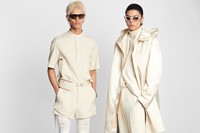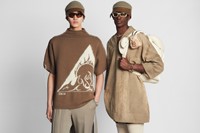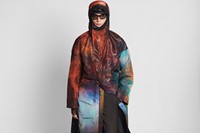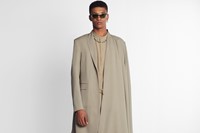Kim Jones had dreamed of doing a show in Egypt for years. It makes sense for the relentlessly peripatetic designer, who spent his formative years in Africa – Botswana, Tanzania, Ethiopia and Kenya – and cites the continent as among his favourite places on earth. And after Dior menswear shows exploring the urban locales of Tokyo, Miami, London and Los Angeles, this time Jones took 300 press, well-heeled Dior clients and celebrities far off fashion’s oft-beaten track to present his Pre-Fall 2023 Dior menswear collection, the first ever fashion show in front of the Great Pyramid of Giza, a few miles south of Cairo.
It was an extraordinary experience – one lost on no one in attendance, including Jones himself. “It’s surreal,” he said, speaking ahead of his show. He meant both the experience as a whole and specifically the plans for the pyramids – Giza’s Pyramid of Menkaure, Pyramid of Khafre and the Great Pyramid, lit by klieg lights that ended up extending far into the sky and making the ancient structures seem like a sci-fi, space-age portal to another dimension. And of course there are plenty of rumours that that’s exactly what the pyramids are, pseudoarchaeology arguing that these exceptional structures were erected by extraterrestrials.
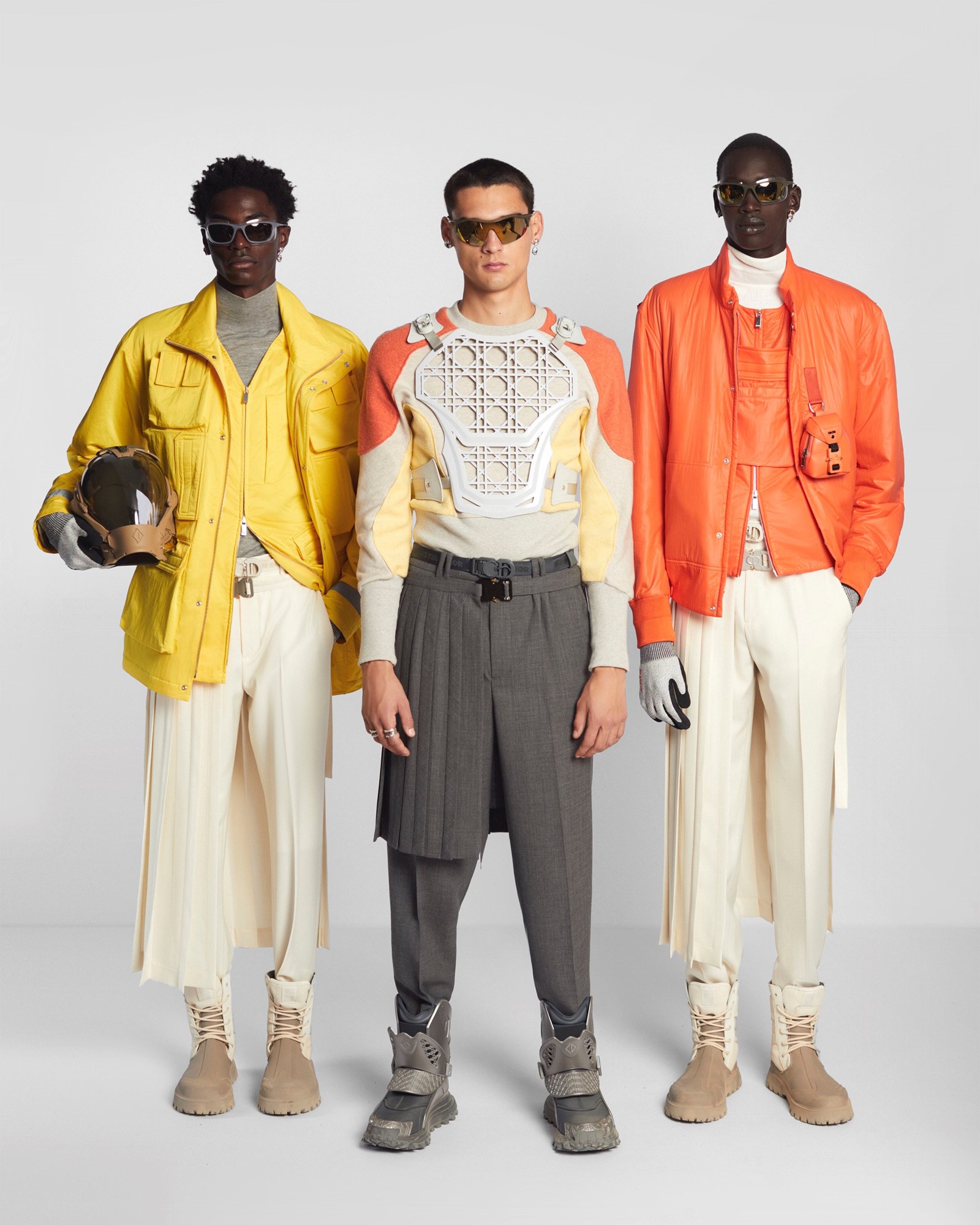

Which, maybe, triggered Jones’s reaction to this show location – rather than diving into ancient historicism, it was a bold thrust towards the future. It was informed, in part, by a re-reading of Frank Herbert’s Dune, as well as an eye on the modernity to be found in archival Dior designs. And, after all, John Galliano designed the most over-the-top Egyptomaniacal show of all time for Dior some 20 years ago – remember Erin O’Connor as a reincarnated Tutankhamun in shimmering gold sequins with strap-on postiche and Nefertiti headdress. “You can’t do a show like that anymore,” said Jones. Besides, he had his own vision of Egypt.
The Dior archival elements were subtle, gentle even – the plissé skirt of a Dior ballgown from the 1950s, named Bonne Fortune, became a gesture of pleated kilt strapped over trousers, itself a nod to the shendyt – the skirt-like garment you see on statues of Egyptian pharaohs and deities. The embroideries of the famous Junon gown, composed of shell-like petals of silk, were transposed to a tunic under a veil of tulle. Cannage patterns quilted clothes and demarcated blown-up moon-boots and body armours, while the colours were the bleached shades of the desert sands, running from beige through to Dior grey, as if moving from daytime to dusk. But the future was ever-present: Dior’s Egyptian hoarder wore 3D printed helmets rather than pharaonic crowns – inspired, in part, by Alejandro Jodorowsky’s unsuccessful attempt to first translate Dune to the big screen in the 1970s, with a nod to the anthropomorphic futurism of HR Giger, a collaborator on that abortive project.
Yet there was an ideology of Dior built into this show that ran deeper than Bar jacket buttons and pleats. Christian Dior was obsessed with astrology, consulting psychics around every aspect of his life and trusting their words – and the guidance of the stars – implicitly. Jones’s echoed that obsession with a sequence of prints based on deep space NASA images of distant stars – while, for him, bringing Dior to Egypt closed a trilogy of shows begun in January, on a recreation of the Pont Alexandre III bridge – their most Parisian of locales. Ironically, bringing Dior across the world geographically was to philosophically bring it home, to Christian Dior’s personal obsessions. There were 75 models, marking 75 years of Dior. And, undoubtedly, the sight of Dior’s gentlemen treading through the desert sands before magically illuminated pyramids is an image that will resonate for another 75 years, or so.
